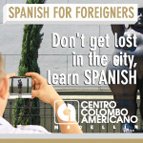Colombian Culture
Music, Food, Cinema, Literature, Soccer
Introduction
Colombian culture is incredibly rich, due primarily to the great variety of peoples and communities found in Colombia.
The culture of Colombia has been influenced by Spanish culture as well as the various cultures of the numerous indigenous populations that have lived here since long before the arrival of the colonisers.
Colombia received many people of African descent, especially in the coastal regions, and so African culture has also had a strong influence on the country's culture.
More recently Colombia culture has been strongly influenced by the nearby USA. American culture can be seen everywhere, particularly the larger cities. Fast Food restaurants are increasingly commonplace, people flock to watch the latest Hollywood movies and English has become an important second language.
Overview of Colombian Culture:
This page is divided into the different aspects that together form the complete culture of Colombia. Many of the sections also have their own more detailled page(s) where links are provided.
Colombian Music
Barely can you walk down a street or take a bus in Colombia without hearing music blaring out.
While foreign music is becoming increasingly popular, the majority of the rhythms you hear are from Colombia or the surrounding region (most notably the Caribbean).
The typical Colombian music you hear varies greatly depending on the region. Travel to the Caribbean coast and you'll hear the tropical sounds of Vallenato, Cumbia and Champeta. In Antioquia the preference is for Pasillo and Guasca. In the southern city of Cali it's 'Pura Salsa!' etc.
Popular music has taken off in Colombia with artists like Shakira and Juanes selling millions of records worldwide and making huge international tours.
Classic rock, particularly British bands like The Beatles, Pink Floyd and Led Zepellin, is very popular. Many Colombians are also fans of 80s pop music and there are numerous radio stations that pump out cheesy 80s anthems.
Agentinian artists such as Charly Garcia, Andres Calamaro, Fito Paez, Soda Stereo, and Los Fabulosos Cadillacs have also made a strong impression on Colombians.
Colombian Food
Food plays an important part in Colombian life especially in the context of social gatherings.
You will often hear of several families in a neighbourhood getting together for a 'Sancocho' etc that is cooked right in street.
As with various facets of Colombian culture, Colombian cuisine varies significantly from region to region. Expect fried fish and coconut rice on the Caribbean coast, and beans and arepa in Antioquia for example.
The variety of food adds to the interest of travelling around the country as there is often a new dish to be sampled in each department.
Cinema
They might lack the production values of Hollywood, but Colombia has produced some very good films over the years.
Among the best are Satanas, Rosario Tijeras, Sumas y Restas and Maria Full of Grace.
Here is the trailer for my personal favourite, Satanas. It is based on the true story of Campo Elias Delgado who assassinated various people at the Pozzetto restaurant in Bogota in 1986. The film is directed by Andy Baiz.
Literature
There is really only one place to start when it comes to Colombian literature and that is with the country's one and only Nobel Prize winner Gabriel Garcia Marquez or "Gabo".
His most famous novels, One Hundred Years of Solitude and Chronicle of a Death Foretold, give a good insight into Colombia culture and everyday life.
German Espinosa is another Colombian writer of considerable reputation. He has often been referred to as "Gabo without the Prize".
Soccer
Colombian soccer has a rich history and both the national side and domestic teams are strongly ingrained in Colombian culture and are a source of great pride for Colombians.
A trip to a Colombian football match is an experience to remember. Even if you have no interest in football it will give you a tremendous insight into one of Colombia's most passionate pursuits.
Of particular importance are the derby matches played between fierce rivals in the Colombian soccer league.
Christmas
It's well worth experiencing a Christmas in Colombia. The country seems like one big party for the entire month of December!
Colombians celebrate Christmas by singing novenas (carols), lighting candles on the Dia de las Velitas (Candle Day) and by eating typical food. The Christmas illuminations are also probably the best of any I have seen in any country.
National Symbols
It's hardly surprising that a country as rich in culture, geography and wildlife as Colombia has a wide range of national symbols.
Return from Colombian Culture to Homepage








New! Comments
Have your say on the site! Leave me a comment in the box below.